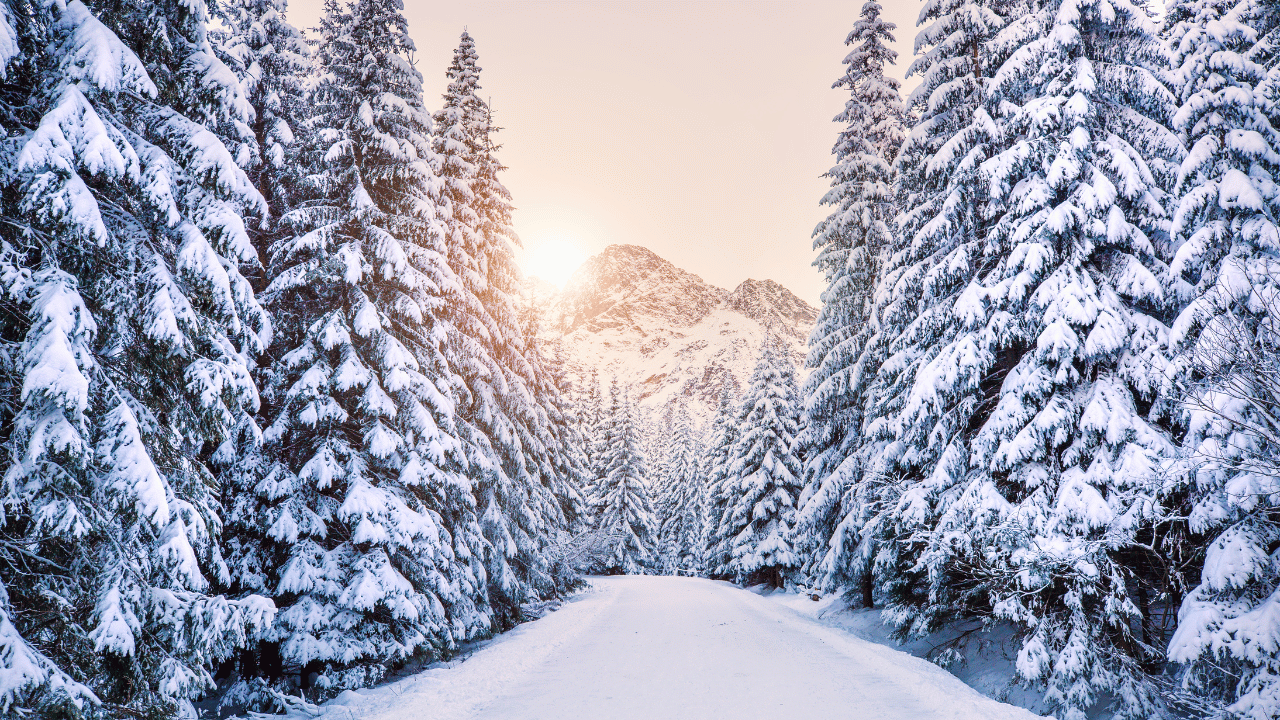Why Is winter so warm? You’ve noticed the mild winters, haven’t you? Climate change is the culprit, and it’s not just about less snow. It’s altering ecosystems, impacting agriculture, and reshaping our world. In this article, you’ll discover why winters are warming, how it’s affecting our planet, and what it means for our future. Get ready to dig deep into the chilling truth behind our warming winters.
Climate Change’s Influence on Winter
Your understanding of climate change’s influence on winter is crucial as it profoundly alters traditional weather patterns, making winters warmer and less predictable. With climate shifts, winter anomalies are becoming the norm rather than the exception. These include warmer temperatures, reduced snow cover, and an increase in extreme weather events.
Temperature patterns are also changing. The warming is not uniform; some areas may experience colder than usual winters, while others have unseasonably warm temperatures. These variations are part of a broader trend of increased seasonal variability linked to climate change.
The environmental impact of these climate shifts is profound. Ecosystems adapted to cold winters are under threat, and wildlife is struggling to keep pace with the rapid changes. Warmer winters also have significant implications for human communities, affecting everything from agriculture to winter sports.
Understanding these changes is not merely an academic exercise. It’s about recognizing the urgency of the problem and the need for action. The changes we’re seeing are not natural seasonal variations; they’re driven by human activity and they’re accelerating. The future of winter, and indeed all our seasons, depends on our response to climate change.
Declining Snowfall Trends Explained
As you’ve likely noticed, snowfall has been on a steady decline, making our winters less white than they used to be. This trend, known as snowpack decline, is a result of global warming and the consequent increase in winter precipitation.
Scientific data shows that Arctic warming is contributing to this phenomenon. The Arctic is warming at a rate almost twice as fast as the rest of the world. This rapid warming has profound effects on global weather patterns, including the type and amount of winter precipitation we see. As the atmosphere warms, it can hold more moisture, which often falls as rain instead of snow.
This decline in snowfall isn’t just affecting our winter landscapes – it’s also impacting agriculture. Take the peach crop, for example. Peaches require a certain amount of cold weather to produce fruit. With less and less cold weather each year, peach crops are suffering.
Understanding these declining snowfall trends is crucial. It not only helps us prepare for a future with less snow but also highlights the urgent need for action on climate change.
Concerns Raised by Warmer Winters
Over time, you’ve probably noticed the shift in winter temperatures and the implications aren’t just limited to less snowfall; there are serious concerns raised by these increasingly warmer winters. The environmental consequences are significant, with disrupted natural cycles leading to water shortages and changes in wildlife behavior.
| Environmental Consequences | Economic Impacts | Urgent Actions Needed |
|---|---|---|
| Water shortages due to reduced snowfall | Effect on industries reliant on snow | Increase in renewable energy usage |
| Disrupted natural cycles affecting flora and fauna | Unpredictable agricultural yields | Urgent reduction in greenhouse gas emissions |
| Greater risk of wildfires from drier conditions | Increased costs of wildfire management | Policies to promote sustainable practices |
| Loss of natural habitats due to rising temperatures | Tourism losses in winter sport destinations | Investment in climate change research |
The economic impacts are just as worrying. Industries like skiing and snowboarding can suffer greatly during warmer winters, and there are added costs for managing wildfires and water resources.
Urgent action is necessary to mitigate these effects. This includes reducing greenhouse gas emissions, transitioning to renewable energy sources, and implementing sustainable practices. Scientists and policymakers must work together to tackle this pressing issue.
Negative Impacts of Mild Winters
You might not realize it, but mild winters can have serious negative impacts on various sectors, including agriculture and economy. The agricultural challenges are particularly severe, as certain crops rely on cold periods for their growth cycle. Without these, yields can decrease significantly leading to economic repercussions. Less snowfall can mean less available water, resulting in environmental consequences such as water shortages and increased wildfires.
Furthermore, warmer winters can bolster populations of pests and disease vectors, jeopardizing not only agriculture but also public health. The health impacts can range from increased incidences of vector-borne diseases to respiratory disorders, as warmer winters can exacerbate air pollution.
Simultaneously, the social disruptions cannot be overlooked. Skiing, ice fishing, and other winter sports provide substantial economic contributions to many regions. Warmer winters can spell disaster for these industries and the communities that depend on them.
Mitigation Strategies for Climate Change
Despite the daunting challenges, there are numerous effective strategies you can adopt to help mitigate the impacts of climate change. In terms of reducing your carbon footprint, it’s all about the choices you make every day. By choosing sustainable practices, you can contribute significantly to the fight against global warming.
Here are four simple yet impactful ways you can take action:
- Adaptation Strategies: Be proactive and adapt your lifestyle to be more environmentally friendly. This might involve changes to your diet, transportation, or consumption habits.
- Renewable Energy: Consider shifting to renewable energy sources for your home or business. Solar and wind power are increasingly accessible and affordable options.
- Green Technologies: Investing in green technologies like energy-efficient appliances and electric cars can significantly reduce your carbon emissions.
- Sustainable Practices: From recycling to composting, there are numerous practices you can incorporate into your daily routine to promote sustainability.
Through these strategies, you can demonstrate that each person’s efforts matter. Remember, climate change isn’t just a global problem—it’s a personal one too. By playing your part, you contribute to a larger collective effort to mitigate the impacts of our warming winters.
Understanding the Warming Winter Trend
In understanding this pervasive trend of warming winters, it’s crucial to grasp the factors contributing to it. Winter trends are changing, with a noticeable temperature rise across the globe. These changing weather patterns are due in large part to human activities, primarily the burning of fossil fuels, which release greenhouse gases into the atmosphere.
This temperature increase is not only making our winters warmer but is also disrupting normal weather patterns. Increased global temperatures lead to more moisture in the atmosphere, which can result in heavier winter precipitation in some areas, but a significant snowfall decline in others.
Climate impacts are far-reaching and varied. Warmer winters can disrupt ecological systems and affect animal and plant life cycles. They can also lead to water shortages and increase the risk of wildfires due to drier conditions. Moreover, industries that rely on cold winters, such as winter tourism and agriculture, could be at risk.
Understanding this warming winter trend is the first step towards mitigating its impacts. It’s crucial for you to be aware of these changes, as they have serious implications for our planet and future generations.
Agriculture in a Warmer Winter
As winter temperatures continue to rise, your agricultural practices may need significant adjustments to adapt to these changes. The impact on crops can be substantial. For instance, extended warmth can alter the life cycles of plants, leading to early blooming and susceptibility to late frost damage.
Water scarcity is another serious concern. Warmer winters mean less snow, which can lead to a decrease in the springtime meltwater that many regions rely on for irrigation.
The industry vulnerabilities and economic risks associated with a warmer winter are also significant. These include potential loss of revenue from crop failures and increased costs associated with changes in farming practices.
The environmental consequences of these warmer winters should not be overlooked. Changes in plant life cycles can disrupt ecosystems, affecting wildlife and leading to a loss of biodiversity.
Consider these four key points:
- Warmer winters can disrupt plant life cycles, impacting crop yields.
- Decreased snowfall can lead to water scarcity, affecting irrigation.
- The agricultural industry faces significant economic risks due to climate change.
- The environmental consequences of these changes are far-reaching, impacting ecosystems and biodiversity.
Adapting to these changes is key for the sustainability of your agricultural practices.
Ecosystems Affected by Warmer Winters
You’ll quickly notice that warmer winters aren’t just affecting agriculture, but they’re also drastically altering our ecosystems. Ecosystem adaptations are critical as species strive to survive climate challenges. Warmer winters can disrupt animal hibernation patterns, triggering premature wildlife shifts. For instance, birds may migrate earlier, altering the balance of local ecosystems.
Plant responses are also significant. Some plants require cold temperatures for seed germination, while others need winter chill to break dormancy. Warmer winters can disrupt these necessary processes, leading to a cascade of ecological changes, including altered bloom times and fruit yields.
Winter ecology is inherently tied to these climate challenges. With decreased snowfall, animals that rely on snow for camouflage and hunting are at risk. Moreover, reduced snow cover can affect soil temperatures and moisture levels, further impacting plant health and survival.
Potential Future Implications
Facing these climate challenges head on, it’s crucial that we understand the potential future implications of warmer winters. These implications are multi-tiered, extending to economic parameters, food production, health, and the environment.
- Economic implications: Warmer winters can severely impact industries dependent on seasonal weather, such as tourism and agriculture. For instance, ski resorts may see a decline in business, while crop yield may fluctuate unpredictably.
- Food production: Changes in climate can disrupt the growth cycles of crops, potentially leading to decreased production and increased food prices.
- Health concerns: Warmer winters can contribute to the spread of diseases and pests, creating public health crises.
- Environmental impacts: Alterations in animal migration patterns, extinction of certain species, and increased wildfires are potential outcomes of warmer winters.
Looking forward, it’s evident that we’re up against sizeable challenges. However, by understanding these future implications, we’re better equipped to create strategies and mitigation plans. Let’s use this knowledge to inspire change and protect our world for generations to come.
Positive Outcomes of Warmer Winters
While the challenges of warmer winters can seem overwhelming, there are also some unexpected benefits you might not have considered. For instance, winter tourism can thrive in milder climates. You can enjoy outdoor activities such as hiking and camping for longer periods, enhancing your physical health and mental well-being.
A decrease in energy consumption is another significant advantage. With warmer winters, you won’t need to crank up the heat as high or as often, saving on your energy bills and reducing greenhouse gas emissions.
Changes in winter temperatures also impact wildlife adaptation and crop resilience. Certain species may adapt to the warmth, shifting their habits, and expanding their habitats. This can lead to increased biodiversity, promoting a healthier ecosystem.
Lastly, some crops may actually benefit from warmer winters. In certain areas, a longer growing season can lead to increased productivity, enhancing food security. It’s also possible that climate-resilient crops could be developed to thrive in warmer conditions.
Human Role in Rising Winter Temperatures
Even though you might not realize it, your daily activities play a significant role in rising winter temperatures.
- Fossil Fuel Consumption: One of the primary human activities causing winter temperature rise is the burning of fossil fuels. This action releases carbon dioxide and other greenhouse gases into the atmosphere, trapping heat and causing global warming.
- Deforestation: Cutting down forests reduces the planet’s ability to absorb carbon dioxide, exacerbating the effects of climate change. This contributes to milder winters and less extreme cold.
- Industrial Processes: Manufacturing and other industrial processes release a significant amount of greenhouse gases. These activities add to the warming trend observed in winter months.
- Urbanization: Building cities and towns changes the natural landscape, often leading to the ‘urban heat island’ effect. This can increase local winter temperatures.
The snowstorm impact is also influenced by human activities. Warmer temperatures can lead to more precipitation, increasing the intensity of snowstorms.
In the long term, these activities have the potential to drastically alter winter as we know it. The effects are wide-ranging, from changes in ecosystems to impacts on agriculture and human health. It’s crucial to understand our role in these changes, and take steps to mitigate them.
Extreme Cold and Climate Change
Despite the overall warming trend, it’s crucial to understand that climate change doesn’t eliminate the possibility of your experiencing extreme cold events. In fact, alterations in the polar vortex, a ring of cold air circling the polar regions, can lead to periods of intense cold, often known as cold extremes.
These modifications in the polar vortex are linked to the uneven warming of the Arctic, leading to its destabilization and allowing frigid air to spill into lower latitudes. This phenomenon might explain some of the intense snowstorms and winter unpredictability you’ve been witnessing.
The intensity of snowstorms can increase due to the additional moisture in the atmosphere from the rising global temperature. A warmer atmosphere holds more moisture, and when it’s cold enough, this excess moisture can lead to heavy snowfall.
Thus, while the global temperature trend is upwards, it doesn’t rule out the occurrence of extreme winter events. The relationship between climate change and winter weather is complex, and the changing patterns of extreme cold and snowstorm intensities are part of this intricate puzzle. This is climate change in action, and it’s reshaping our winter experiences.
Impact of Warming on Snowstorms
Your winter’s transformation into a mix of unpredictable snowstorms is a direct consequence of the warming climate. While you may associate global warming with rising temperatures, it’s important to understand its impact on winter precipitation as well. The warmer atmosphere can hold more moisture, leading to increased moisture accumulation. This contributes to the intensity of snowstorms, making them more severe when they do occur.
Here are four key points to understand:
- The warmer climate leads to increased moisture in the atmosphere, intensifying snowstorms.
- This increased moisture can result in greater winter precipitation, including heavier snowfall.
- The unpredictability of winters is heightened, making it harder to anticipate weather patterns.
- Warming winters can exacerbate drought conditions, as snowfall, a crucial source of spring and summer water supply, decreases.
The warming climate is not just about hotter summers or milder winters. It’s about drastic changes in weather patterns, leading to unpredictable winters, amplified snowstorm intensity, and potential drought exacerbation. Understanding these changes allows us to better anticipate, prepare for, and mitigate the impacts of our warming world.
Long-Term Climate Change Effects on Winter
Often, you’ll find that the long-term effects of climate change are reshaping your winter experiences in profound and lasting ways. These effects range from temperature anomalies to drastic weather pattern shifts, challenging your winter adaptation strategies and demanding increased climate resilience.
One of the most evident changes is the snowpack decline. This decrease in snow accumulation is a direct result of rising temperatures, leading to less snowfall and more rainfall. This shift poses significant challenges for regions that rely on snowpack for water resources and winter tourism.
Furthermore, you’ll notice an increase in temperature anomalies. These are instances where the temperature significantly deviates from the normal range. Unusually warm winters can disrupt ecosystems, affecting wildlife and plant life cycles.
Lastly, the shifts in weather patterns, driven by climate change, are becoming more unpredictable and severe. These shifts can lead to extreme weather events, such as intense winter storms or unseasonably mild winters, which can have drastic impacts on agriculture, infrastructure, and human health.
Therefore, understanding these changes and building climate resilience is key to navigating this new winter landscape. The long-term effects of climate change on winter are here, and they’re changing the way we experience the season.
Rising Global Temperatures and Winter Weather
Experiencing unusually warm winters lately? You’re not alone – this is a direct result of global temperatures rising, a phenomenon that’s dramatically altering our winter weather patterns. This change has far-reaching implications beyond just needing a lighter coat.
- Winter tourism and sports, for instance, are feeling the heat, literally. The lack of snow is affecting ski resorts and other snow recreation activities that thrive on the cold.
- Holiday traditions are also changing. Remember building a snowman or having a white Christmas? Those memories are becoming less common as snowfall decreases.
- If you suffer from seasonal affective disorder (SAD), warmer winters might be affecting you too. SAD is linked to changes in sunlight, which can be affected by warmer weather patterns.
- Lastly, the warming trend is disrupting ecosystems. Many animals rely on the snow for protection and water. With less snow, their survival is at stake.


